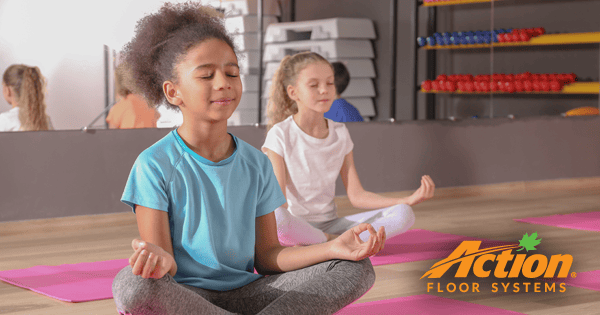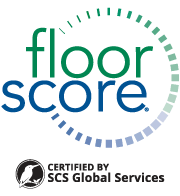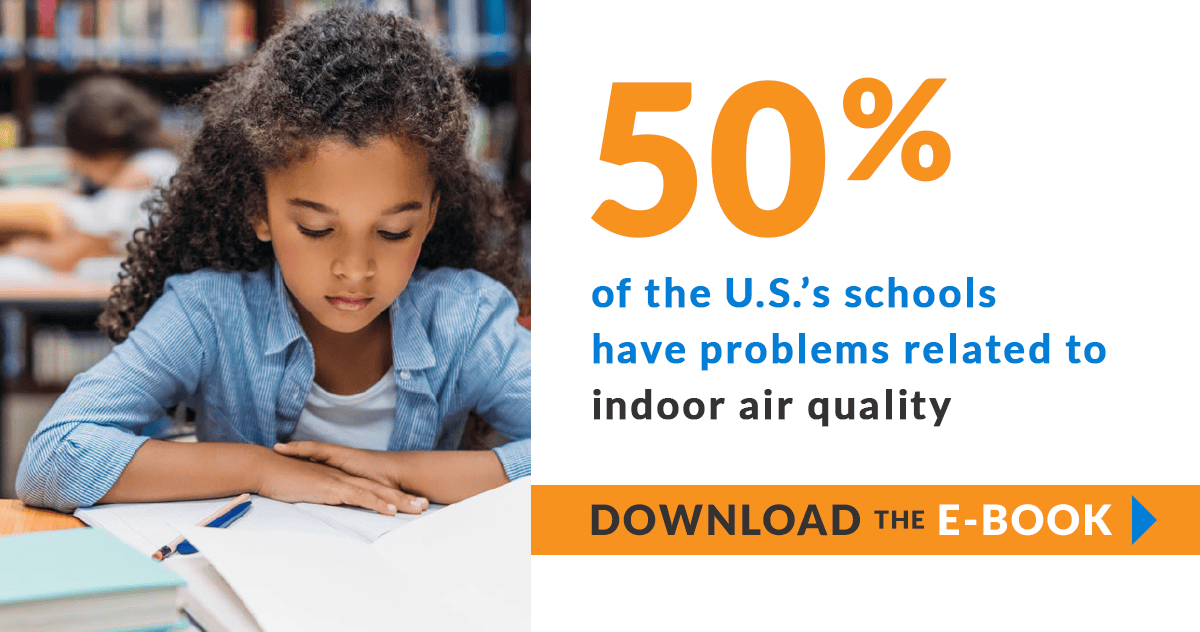 Parents, teachers, coaches … they all want to protect students and keep them healthy. That’s why questions will likely arise about the impact that building materials for new construction and renovation projects could have on the health of children and teenagers as well as faculty, staff, and the greater community.
Parents, teachers, coaches … they all want to protect students and keep them healthy. That’s why questions will likely arise about the impact that building materials for new construction and renovation projects could have on the health of children and teenagers as well as faculty, staff, and the greater community.
Architects working on K-12 school construction projects strive to design spaces that are aesthetically pleasing, engaging, safe, and functional. That can include contemplating the effect a building’s indoor environment may have on the occupants.
In recent years, the green construction movement placed an emphasis on a project’s environmental impact, or the health of the planet. Now, a new practice has emerged. The healthy building movement adds human wellness for consideration, and research shows end users are expecting the buildings where they live, work, play, and learn to be safe and healthy places.
As explained in the 2016 report, The Drive Toward Healthier Buildings from Dodge Data & Analytics along with Delos, suggests there’s a shift taking place from focusing solely on green construction towards an emphasis on healthy building practices, which can lead to tangible business and financial benefits. Stephen Jones, Senior Director of Industry Insights at Dodge Data & Analytics, says the healthy building movement coincides with sustainability efforts, and the two concepts go hand-in-hand.
“The focus on buildings that enhance the health and well-being of their occupants is likely to follow a similar trajectory [to green construction], boosted by those who have committed to sustainability in their organizations.”
94% HR executives report that their company takes health factors into consideration when choosing design, location, and operations of their building while 42% of building owners believe health and wellness research should be a leading driver of design and construction approaches.
Among the top healthier building features outlined in the report were:
- Natural Light and Better Indoor Lighting
- Accessibility to Nature and Outdoor Views
- Construction with Non-Toxic Building Materials
- Design and Construction that Encourage Physical Activity
When it comes to young people and the schools they attend, there’s no doubt that a healthy indoor environment takes precedence. The Environmental Protection Agency (EPA) says kids spend 90% of their time indoors, and much of that takes place at school.
From the childhood obesity epidemic in America to common respiratory health issues such as asthma, there are direct connections to the role of high-quality sports flooring and healthier school construction projects. New or updated athletic facilities can boost interest and participation in school sports while providing a better user experience for physical education classes.
Healthy building practices make the indoor environment safer by reducing pollutants known as volatile organic compounds (VOCs) in the air. Studies indicate VOCs may worsen symptoms of allergies and asthma in children.
The Importance of Indoor Air Quality
A key role of all flooring, including sports flooring, in healthier buildings is reducing the emission level of VOCs in materials and adhesives. When VOCs reach a certain threshold, indoor air quality (IAQ) and health is compromised.
While a commitment to non-toxic materials used in construction was not the only air quality-related practice mentioned in The Drive Toward Healthier Buildings, it was listed at number three, above ventilation strategies. The report indicates enhancing air quality will be the feature of building projects most likely to increase in the next several years.
Poor IAQ can contribute to a condition known as sick building syndrome. It has been said that immediate effects of indoor pollutants are similar to the common cold or allergies. Symptoms may include irritated eyes, nose, and throat, as well as headaches, dizziness, and fatigue.
It’s not uncommon for office workers to experience sick building syndrome as they are spending eight hours a day or more inside. However, that’s also the case for K-12 students, and indoor pollutants could have an even greater impact on young people.
A statement made in the EPA’s Healthy Building, Healthy People report noted, “Children often experience higher exposures to environmental pollutants than adults because, per pound of body weight, they breathe more air and ingest more material than adults. Children also more readily absorb contaminants.”
Long-term health issues could occur after repeated periods of exposure. The EPA explains that effects could include respiratory diseases, heart disease, and cancer; however, further research is needed to better understand the impact of long-term exposure.
The good news is that people value healthy products and are willing to pay more for them. The Consumer Goods Forum’s 2017 Health and Wellness report found 60% of homeowners surveyed would pay more for a healthier home than a traditional home. It stands to reason that people will feel the same way about investing in where their children attend school.
A healthier school building could do more than prevent problems. The EPA cites one study examining green schools in Washington state which reported a 15% reduction in absenteeism and a 5% increase in test scores. Furthermore, investing in something such as better gymnasium flooring can enhance the physical education experience and encourage more students to participate in sports while protecting the bodies of young athletes.
How to Identify Healthier Flooring
Any manufacturer can claim their materials are safe and environmentally friendly, but do they have the proof to back it up? You’ve probably heard about greenwashing and over-exaggerated marketing claims surrounding sustainability. The best way to confirm whether you’re working with someone credible is to look for third-party certifications.
At Action Floors, we’re proud to provide hardwood maple and synthetic sports flooring systems that meet stringent IAQ emissions requirements.
You’ll find the majority of our top products are FloorScore®-certified, which means they have been rigorously tested and conform to the requirements of SCS EC-10.3-2014 Indoor Air Quality Standard as well as these other IAQ emissions requirements and specification criteria:
- California Specification 01350 Special Environmental Requirements
- Collaborative for High Performance Schools (CHPS)
- USGBC LEED 2009 and v4 criteria for low emitting materials (Flooring and Flooring Adhesives)
Every Action Floors system that is made from our unfinished solid hardwood maple has received FloorScore® certification. These systems contain less than 0.5 mg/m³ of total VOCs. Plus, all of our synthetic pad-and-pour systems, including the popular Action Herculan MF, are also FloorScore® certified.
 “Action Herculan MF is an athletic-specific synthetic floor system that is made up of 15 different system configurations,” explains Action Floors Technical Director Don Brown. “In order for them all to meet the requirements necessary for certification, we take the worst-case scenario, meaning the thickest material containing the most resins and have it tested. If that type qualifies, all other floors in the system also qualify.”
“Action Herculan MF is an athletic-specific synthetic floor system that is made up of 15 different system configurations,” explains Action Floors Technical Director Don Brown. “In order for them all to meet the requirements necessary for certification, we take the worst-case scenario, meaning the thickest material containing the most resins and have it tested. If that type qualifies, all other floors in the system also qualify.”
“Due to the recently growing demand for FloorScore® certification, we realized the significance in maintaining the same standards in manufacturing sustainable products. Simply put, a product that is FloorScore®-certified is a healthier product,” Brown adds.
Action Herculan MF and other solvent-free pad-and-pour systems feature an exclusive, water-based, non-toxic topcoat with no VOCs. That means there are no residual fumes. Not only does this ensure proper indoor air quality, it also means schools and other facilities can remain in operation when the system is being installed.
The FloorScore® program was established in response to the demand from end-users and architects to work with companies that produce healthy building materials with low VOC emission. Ultimately, it provides architects and end-users assurance that indoor spaces are healthier and cleaner. It also qualifies for many green building programs including LEED v4, WELL, BREEAM, and CHPS.
Find a Sports Flooring Partner You Can Trust
The Drive Toward Healthier Buildings report found 82% of architects are already specifying non-toxic building materials in their designs.
Action Floors takes its commitment to sustainability as well as healthy and safe flooring products very seriously. That’s why we were the first MFMA-accredited mill to receive the industry’s only Carbon Negative certification and fully support healthy building initiatives with our FloorScore® certification.
Action Floors has even established a special tool to help our organization remain focused on safe and sustainable practices while giving others a way to evaluate flooring manufacturers. Find out more about the criteria in our “SCORES” Card and download a free checklist.
Because Action Floors provides both sports flooring and non-athletic flooring solutions to schools and universities, we believe in helping architects, contractors, and school leadership find systems that not only deliver proper function and performance, but also keep the health and safety of students in mind while protecting the planet.
Check out our case studies and project profiles to see how Action Floors’ systems are being used in both educational and commercial applications. If you’d like to request official FloorScore® certificates or have questions on any of our systems, contact us today or call 800 746-3512. You can also visit our Architect Resource Center to find system specifications and detailed drawings.



















